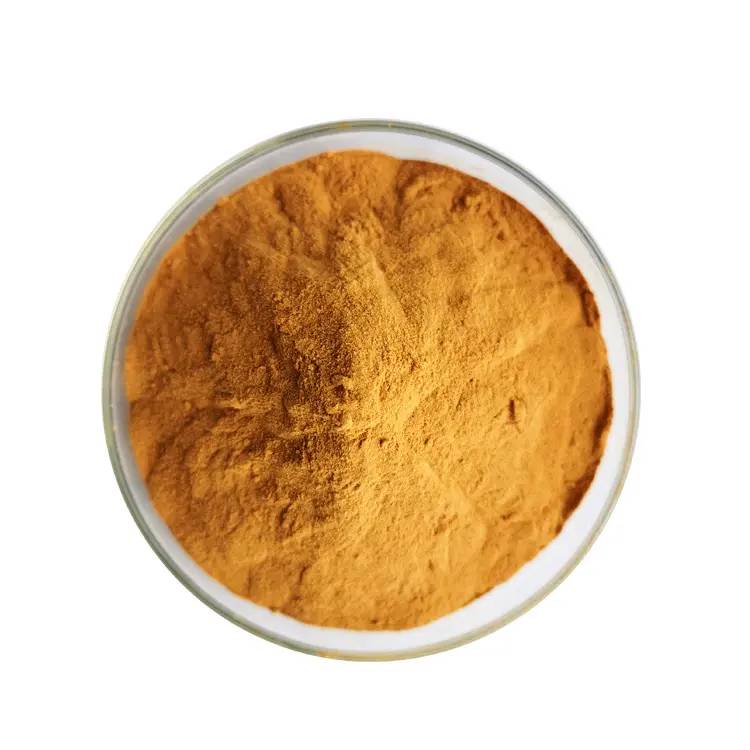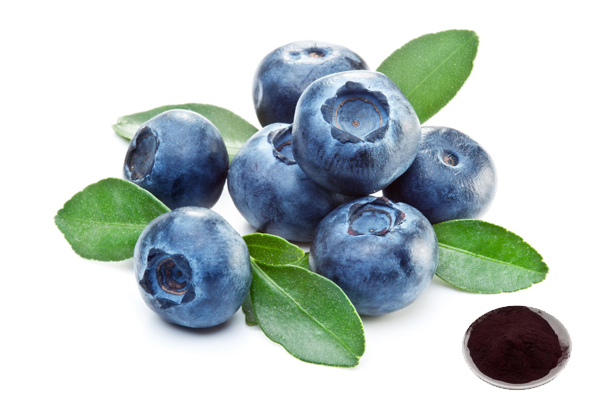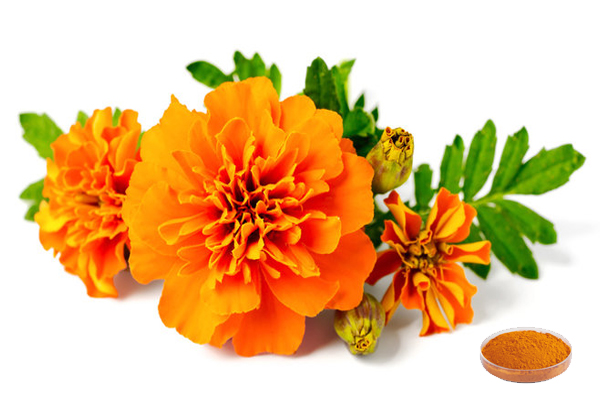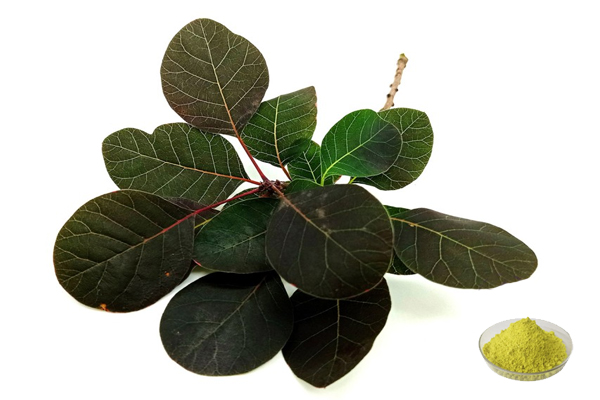Poudre de zéaxanthine 70%
Nom de produit: zéaxanthin Powder En vrac
Analyse :≥70%
Méthode d’essai :HPLC
Apparence: poudre Fine Orange
Résidu de Pesticide: conforme à la norme (ce) No 396/2005
- Description Description
- Fiche technique
- Certificat de formation
-
Qu’est-ce que la poudre de zéaxanthine?
zéaxanthine is a new oil-soluble natural pigment widely found in green leafy vegetables, flowers, fruits, goji berries, and yellow corn. In nature, it often co-exists with lutein, beta-carotene, and cryptoxanthin to form a mixture of carotenoids. The human body and animals cannot synthesize zeaxanthin on their own and must obtain it through food or supplements. In the human body, zeaxanthin is a strong antioxidant and also protects the organism' S des cellules tissulaires par des comportements antioxydants tels que l’éclatation d’espèces d’oxygène mono-linéaires et le piégeage de radicaux libres, protégeant ainsi le système biologique de certains des effets potentiellement délétères dus à des réactions oxydatives excessives.
La technologie Green Spring fournit de la poudre naturelle de zéaxanthine de qualité alimentaire, qui est extraite des fleurs de souci. Il a une bonne solubilité dans l’eau, est sans ogm et répond aux normes de l’ue pour les résidus de pesticides, les résidus de solvants et les métaux lourds. Cette poudre de zéaxanthine est traçable tout au long du processus de production, de la matière première au produit fini. Nous pouvons fournir des rapports d’inspection de qualité de tiers faisant autorité.
Green Spring Technology is a leading biotechnology company in China, established in 2000. It has been dedicated to the research, development, and supply of effective natural ingredients. Its products are primarily used in dietary supplements, nutritional products, cosmetics, and other applications. The company strictly implements a quality management system and organises production following quality standards such as ISO and HACCP. Green Spring Technology has obtained multiple certifications, including Halal, Kosher, COSMOS, BRC, IFS, FDA, ISO 9001, ISO 22000, EU Organic, and USDA Organic.
Spécification:
Nom du produit
Poudre de zéaxanthine En vrac
Nom Latin
Tagetes Erecta L
CAS non.
144-68-3
Source:
Fleur de souci
Ingrédients actifs
zéaxanthine
analyse
Zéaxanthine :≥70.0%
Méthode d’essai
HPLC/HPLC
apparence
Poudre Fine Orange
Résidus de pesticides
Conforme à la norme (ce) n ° 396/2005
Règlement:
Il est conforme à la réglementation de l’ue.
Vous cherchez un devis?Benefits:
Protecting Your Eyesight
Zeaxanthin and lutein are the only 2 remaining natural carotenoids in the retina and are essential carotenoids for the lens, with high aggregation specificity for ocular tissues. It concentrates zeaxanthin specifically in the macular speckles through high affinity binding proteins and specialized transport and metabolism proteins for light-induced oxidative stress via light absorption and localized efficient antioxidant properties to protect the macula from damage. They have a particularly important role in maintaining eye health and visual preservation.
Prevention of Cardiovascular Diseases
Carotenoids are fat-soluble substances that are usually found in higher animal cells in complexes with proteins and other lipid components, especially biofilms. They can improve the immune properties of biofilms and intercellular information transfer, and play a potential role in disease prevention. Zeaxanthin and lutein were found to significantly reduce the thickness of the middle layer of the intima-media vessels of the common carotid artery compared to other carotenoids. Zeaxanthin increases the antioxidant capacity of LDL and prevents cardiovascular diseases. Some studies have reported a lower risk of cardiovascular disease in people with a high daily intake of carotenoids. Researchers found that zeaxanthin can have an inhibitory effect on LDL oxidation under in vitro conditions. Zeaxanthin significantly reduces the incidence of myocardial infarction and helps slow down the process of atherosclerosis.
Cancer Prevention
Zeaxanthin, like many carotenoids, protects against cell and organ damage caused by free radicals in the body. Studies have shown that zeaxanthin inhibits auto-oxidation of cellular lipids and prevents cellular damage caused by oxidation. Zeaxanthin has the function of reducing the occurrence of cancer and enhancing immunity. Domestic and international studies have shown that zeaxanthin has an inhibitory effect on cancer, and its mechanism may be related to the regulation of the level of oxidative stress, inhibition of ATP generation, and up-regulation of p53 mRNA expression.
Cataract Prevention
Zeaxanthin is one of only two carotenoids found in the lens. It has 11 conjugated double bonds in the molecule and a hydroxyl group on the tail group, a structure that gives it strong antioxidant capacity. As a strong antioxidant, it can quench the triplet state of single-linear oxygen and photosensitizer and scavenge damaging oxygen radicals. It prevents membrane lipid peroxidation and reduces the formation of lipofuscin, which in turn prevents cataract formation. Studies have shown that people with a high intake of lutein and zeaxanthin are 19% to 22% less likely to develop cataracts than those with a low intake.
Zeaxanthin specifically absorbs blue light, which is the most damaging light to the retina, thus protecting the cone cells in the central retinal recess. Many studies have shown that a short-term increase in zeaxanthin intake can increase macular pigment, thus enhancing the ability of the macula to fight against damage by harmful substances and light rays, and preventing and slowing down age-related macular degeneration.
Applications:
In the Food Field:
Zeaxanthin has a strong colouring ability due to its inability to be converted into vitamin A after absorption in the body and its ability to be deposited in the body. It can be used to improve the colour of egg yolks and the meat colour of fish, shrimp and other poultry, enhancing food quality and nutritional value. Its toxicological evaluation in the clinic and animal tests have confirmed its safety for consumption, and it is a food colouring approved by the European Union. Compared with chemically synthesized commercial colourants, zeaxanthin powder is natural, nutritious, safe and non-toxic, and the production cost is low.
For Health Products:
At present, the US FDA has approved zeaxanthin as a new type of nutritional additive, which can be applied to food. Zeaxanthin can not be synthesized in the body, entirely from dietary intake, zeaxanthin powder is a functional food development and uses a significant upward trend.
-
Télécharger le document
Zéaxanthine poudre en vrac COA
-
Télécharger le document
Cosmos 2023
Télécharger le documentHalal 2023
Télécharger le documentCasher 2023


 Anglais
Anglais français
français espagnol
espagnol russe
russe coréen
coréen japonais
japonais













